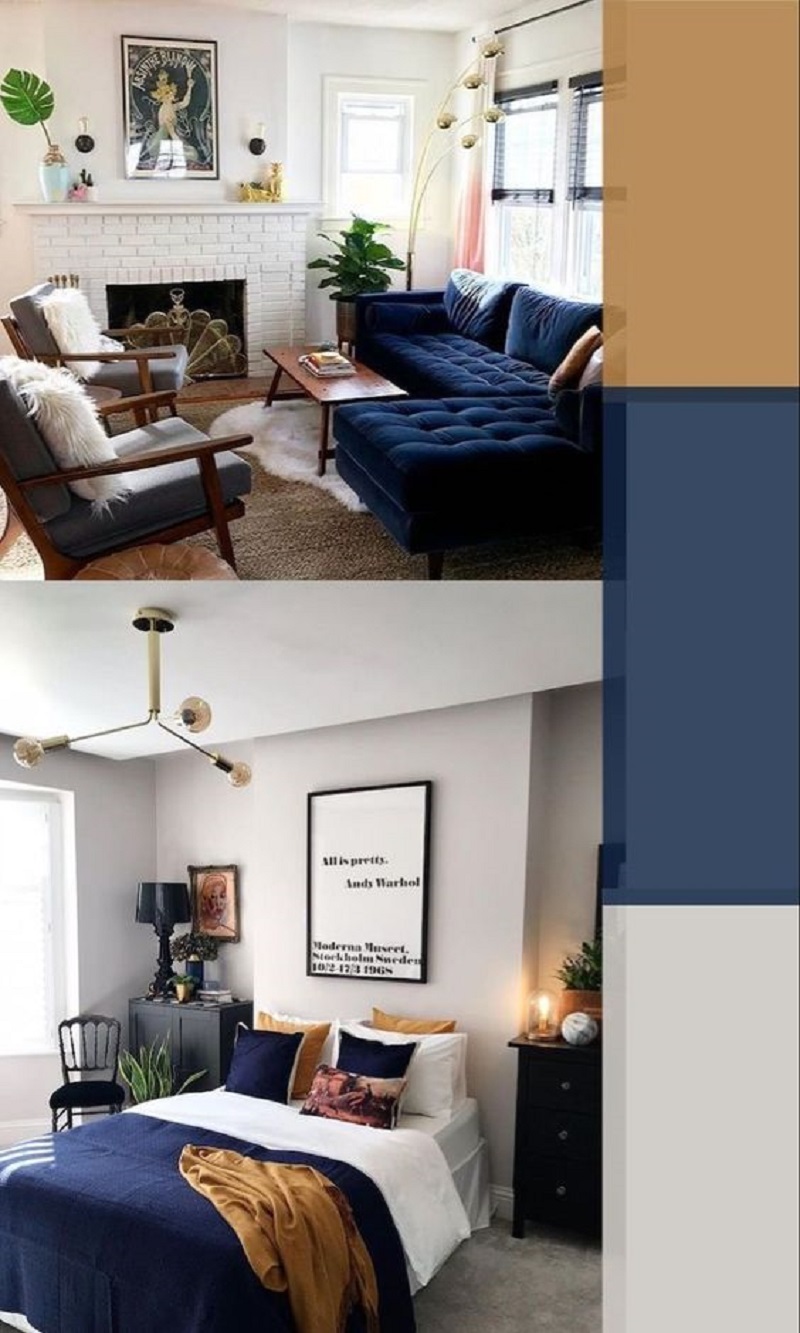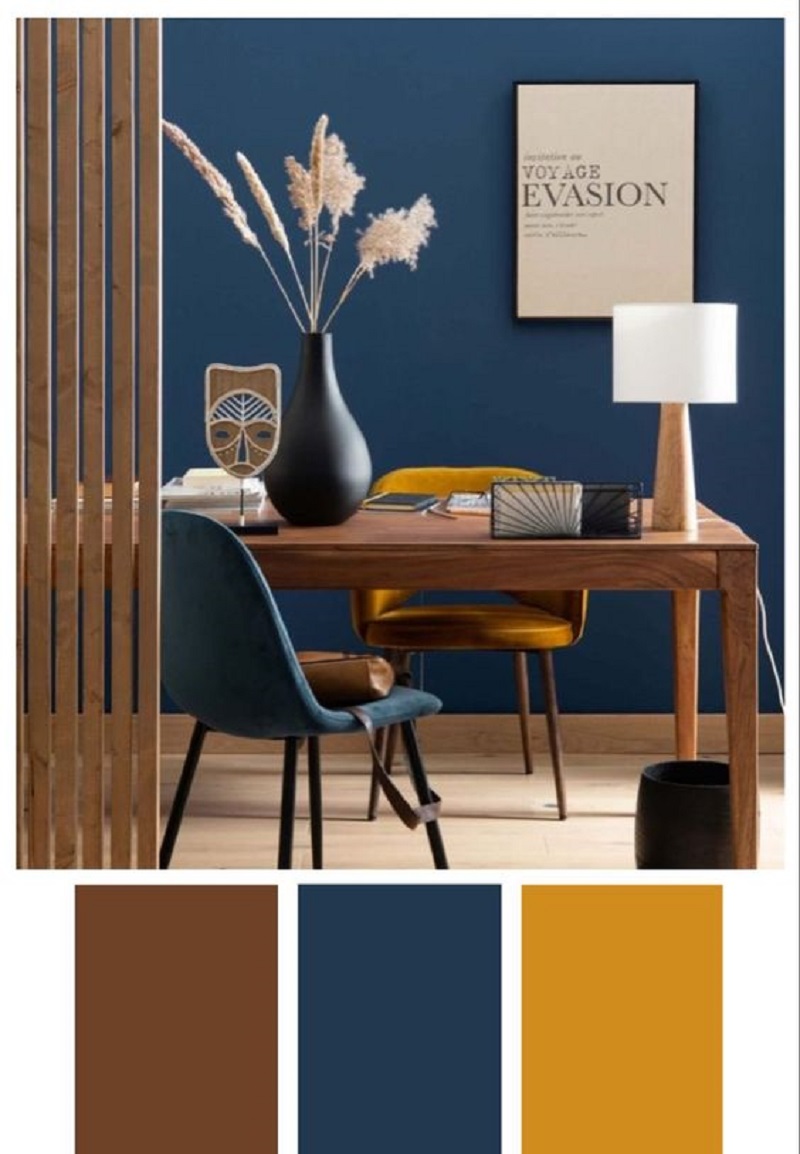Your home is a reflection of your personality, and the color palette you choose can set the mood and ambiance for your living space. Whether you’re planning a complete interior makeover or just looking to freshen up a room, selecting the right color palette is crucial. It can be an exciting yet overwhelming task, considering the endless options available. In this guide, we will help you navigate the world of color to create a harmonious and inviting home that suits your style and preferences.

Understanding Color Theory
Before you start painting or buying new furniture, it’s essential to have a basic understanding of color theory. Color theory explores the relationships between colors and their emotional impact. There are three primary components of color theory: hue, saturation, and value. Hue refers to the color itself (e.g., red, blue, green), saturation relates to the intensity of the color (from vibrant to muted), and value determines the lightness or darkness of the color.

Consider the emotions associated with different colors:
- Warm Colors: Warm colors like red, orange, and yellow evoke energy, passion, and coziness. They are perfect for spaces where you want to create a lively atmosphere, like dining rooms or living rooms.
- Cool Colors: Cool colors such as blue, green, and purple create a sense of calm and tranquility. They work well in bedrooms, bathrooms, or spaces where relaxation is a priority.
- Neutral Colors: Neutrals like white, beige, and gray provide a versatile backdrop for any room. They are timeless and can be used as a foundation for both bold and subtle color accents.
Choosing the Right Palette

Now that you understand the basics of color theory, it’s time to choose the right color palette for your home. Here are some steps to help you make an informed decision:
1. Identify Your Style
Consider your personal style and the ambiance you want to create in each room. Are you drawn to a modern, minimalist look, a rustic and cozy feel, or something in between? Your style will guide your color choices.
2. Evaluate Lighting
The amount and type of natural and artificial light in a room can significantly affect how a color appears. Be sure to test paint samples under different lighting conditions to see how they look during the day and at night.
3. Create a Mood Board
Gather inspiration from magazines, websites, or social media. Create a mood board that includes colors, textures, and patterns that resonate with you. This will help you visualize how different elements come together.

4. Start Small
If you’re uncertain about committing to a full room in a particular color, begin with a smaller space, like a bathroom or hallway, to experiment with your chosen palette.
5. Test Paint Samples
Paint samples are your best friend when choosing a color palette. Most paint stores offer small sample pots, allowing you to try out colors on your walls before making a final decision.
Achieving Balance

Achieving balance in your color palette is essential for creating a harmonious and visually appealing space. While it’s tempting to choose your favorite color and plaster it all over the walls, too much of a good thing can be overwhelming. Here are some tips for achieving a balanced color scheme:
1. The 60-30-10 Rule
This rule suggests dividing your room’s colors into percentages. The dominant color covers about 60% of the room, the secondary color takes up 30%, and the accent color, which adds a pop of interest, occupies 10%.
2. Pay Attention to Undertones
Consider the undertones of your chosen colors. For instance, if your walls are a warm beige, opt for furniture and accents with warm undertones to maintain consistency.
3. Don’t Forget Neutrals
Neutrals are the glue that holds your palette together. They can be used as a backdrop to allow your chosen colors to shine. Neutrals are also versatile and timeless.
Home Decoration and Arrangement
Once you’ve chosen the perfect color palette for your home, it’s time to dive into home decoration and arrangement. Your color choices should guide the selection of furniture, accessories, and artwork to ensure a cohesive look.

1. Furniture Selection
Choose furniture that complements your color palette. Neutral-colored furniture works well with vibrant walls, while bold furniture can be paired with softer wall colors. Ensure that your furniture pieces are not too overwhelming or too small for the space.
2. Accessorize Thoughtfully
Accessorizing can make or break the overall look of your home. Use throw pillows, rugs, curtains, and artwork to introduce your chosen colors throughout the room. Ensure a balance between matching and contrasting elements.

3. Create Focal Points
Every room should have a focal point, which can be a piece of artwork, a stunning piece of furniture, or a unique architectural feature. Use your color palette to draw attention to these areas.

In conclusion, choosing the right color palette for your home is a creative process that involves understanding color theory, aligning with your style, and achieving balance. Once your palette is established, it will serve as a foundation for home decoration and arrangement, allowing you to create a space that’s not only visually appealing but also reflective of your personality and preferences. Happy decorating!
Above is A Guide to Choosing the Right Color Palette for Your Home!
You can refer to more home decoration videos here!
Read more similar articles here!


